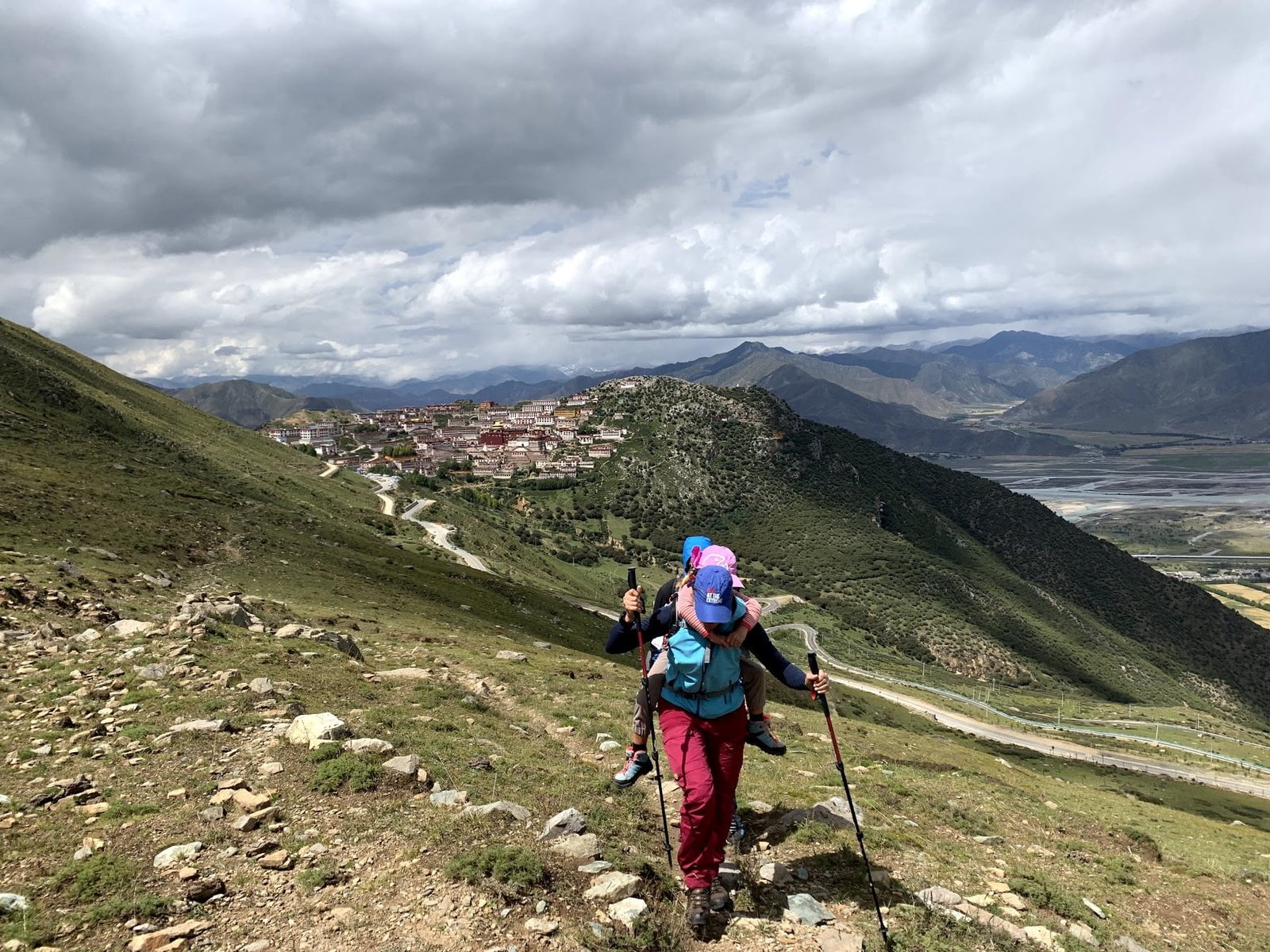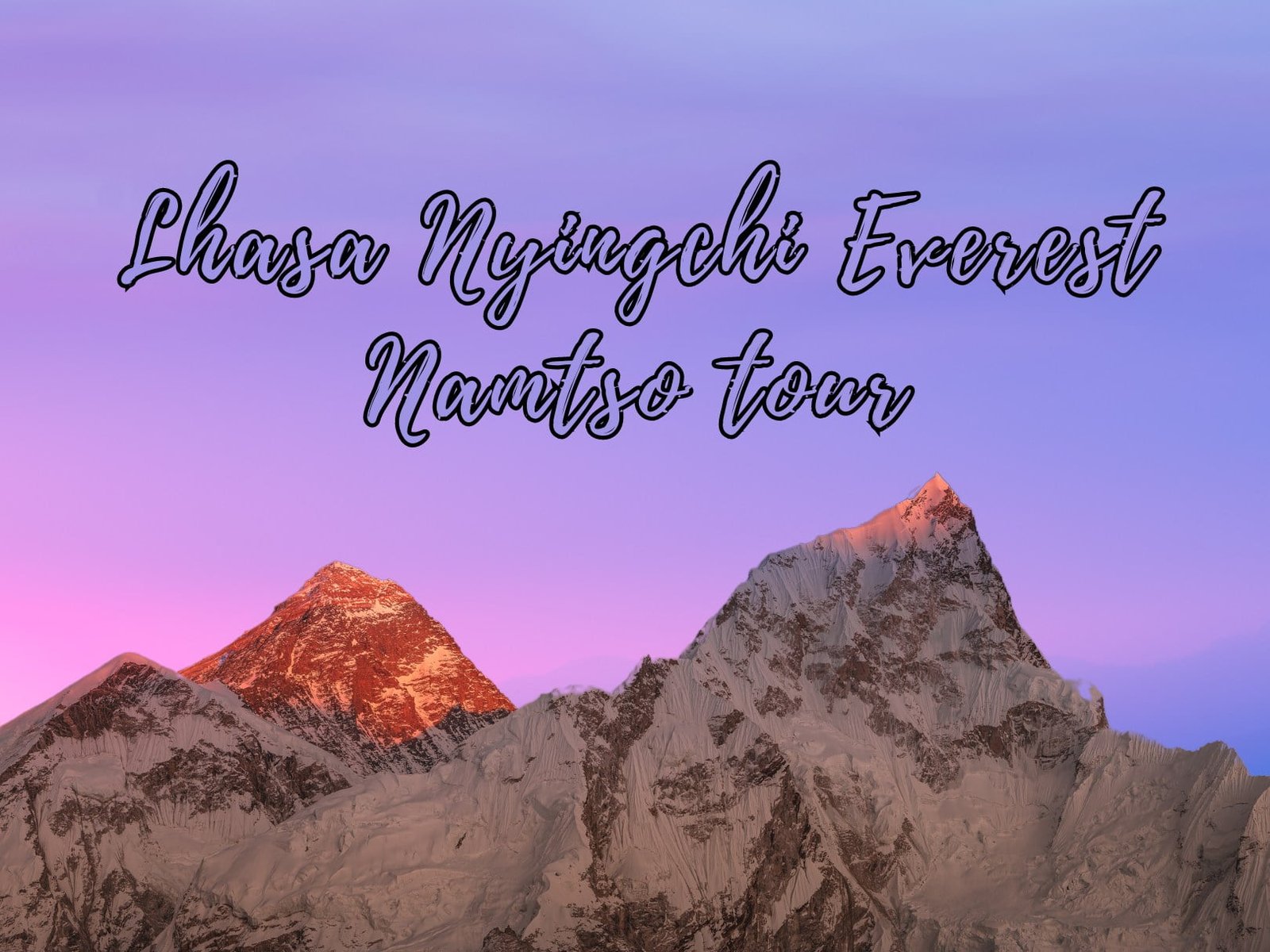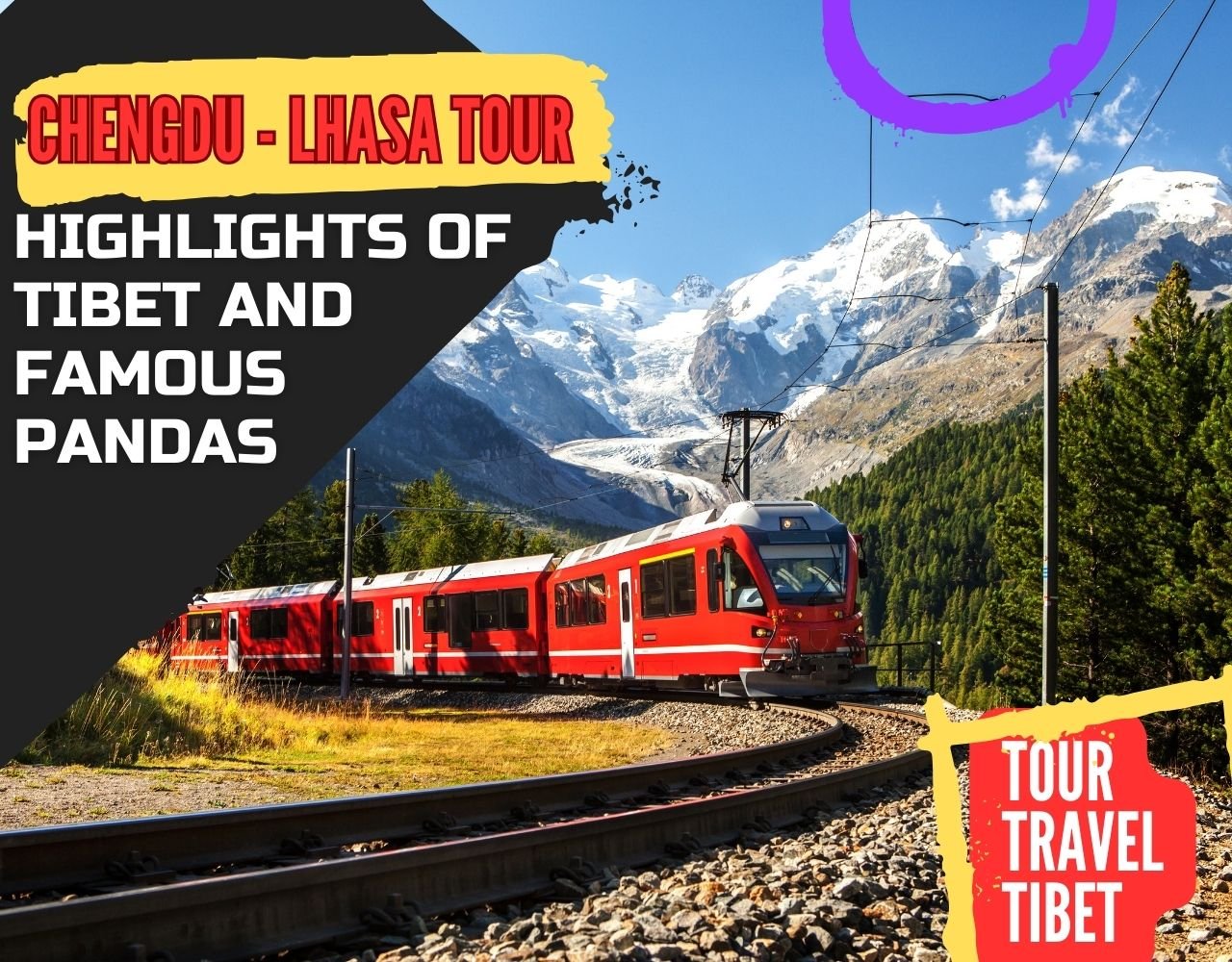The fourth Panchen Lama, born on April 15, 1570, had a father named Kunga Oser and a mother named Tsogyel. At the age of 5, the Monks from Wensa Monastery noticed his extraordinary abilities. When he turned 13, he became a monk at Wensa Monastery, where he studied under the guidance of Kedrup Sangay Yeshi. He received the novice precepts and took on the Dharma name Lobsang Chokyi Gyaltsen.
After that, Lobsang Chokyi Gyaltsen studied scriptures and engaged in debates like other monks in the monastery. During that time, Tsedrang, a revered monk from Palkor Choede Temple in Gyantse, visited Wensa Monastery to impart the teachings of Dharma. When Tsedrang engaged in debates with the lamas of Wensa Monastery, he noticed that despite Lobsang Chokyi Gyaltsen’s young age, he displayed a profound understanding of Buddhist scriptures and impressive eloquence. Astonished by this, Tsedrang invited Lobsang Chokyi Gyaltsen to his residence, where he served him tea, presented him with a yellow cloak, and asked him to teach the Dharma.
This incident created a stir in Wensa Monastery, and all the monks agreed that Lobsang Chokyi Gyaltsen was the reincarnation of the third Panchen Lama Lobsang Dhundup, so they unanimously acknowledged him as such. The enthronement ceremony took place in 1583. At that time, Lobsang Chokyi Gyaltsen was 14 years old. To further his knowledge of Buddhism, he went to Tashilhunpo Monastery to study scriptures and achieved the “Lochen” degree with distinction.
Preside as abbot of Tashilhunpo Monastery
In July 1591, he paid respect to Tang Quyangpei, the fourteenth Head Lama of the temple at that time, as his instructor in Tashilhunpo Monastery, and received the monk’s precept. He later went to Ganden Monastery in Lhasa to study scriptures for several years and returned to Wensa Monastery in 1598 to assume the administration of the monastery and accept disciples to teach the Dharma.
After the passing of Tang Qu Yangpei in 1601, the monks of Tashilhunpo Monastery unanimously chose Lobsang Chokyi Gyaltsen as Tripa of the monastery. Since then, Lobsang Chokyi Gyaltsen has travelled between Wensa Monastery and Tashilhunpo Monastery all year round, overseeing the affairs of the two monasteries, and officially residing in Tashilhunpo Monastery, creating the history that the monastery has become the Panchen Lama’s residence in successive periods.
Lobsang Chokyi made important changes at Tashilhunpo Monastery.
First, he resolved the issue of food for the monks. During that time, monasteries in Tibet relied on income from Choeshi (feudal manor) to sustain their daily lives. However, Tashilhunpo Monastery had very few Choeshi, making it challenging to provide daily meals for everyone. With his persuasive skills and virtuous character, he personally convinced the local feudal lords to donate land and manors to Tashilhunpo Monastery. This solved the monastery’s livelihood problem and expanded its influence.
Secondly, he established the Tashilhunpo Monastery’s own Monlam gathering, eliminating the need for the monks to travel for up to two months each year to attend the Monlam gathering at the Jokhang Temple in Lhasa. This saved time and resources, allowing the monks to focus on learning. It also elevated Tashilhunpo Monastery to a religious centre in the Tsang region.
The Monlam Prayer Assembly in the first month is the most significant festival of the Yellow Sect monastery. It originated from the prayer assembly led by Master Tsongkhapa in Lhasa in the first month of the Tibetan calendar in 1409.
Eventually, Lobsang Chokyi Gyaltsen established the only Dratsang of Tantric Buddhism in Tashilhunpo Monastery. This system was more beneficial for the Gelug faction to cultivate exceptional talents.
Siege of Geluk School by Desi Tsangpa
Furthermore, by the end of the 15th century, the fourth Dharma king of the Karma Kagyu Red Hat lineage, Chodrag Yeshi, and Rinbungpa Tsogyel Dorje began openly suppressing and restraining the Gelug Sect. Under the influence of the Gelug Sect, starting from 1498, the monks from the three major monasteries in Lhasa were prohibited from participating in the annual Great Prayer Conference initiated by Tsongkhapa, with the intention of undermining the reputation of the Gelug Sect. For the next 20 years, the Kagyu Sect near Lhasa sent monks to hold prayer meetings. It was not until 1518 that the annual prayer assembly in the three major monasteries in Lhasa was resumed.
In 1526, the armies of Drigung Kunga Rinchen and Shokha raided all the manors of Gaden Monastery. Then, in 1537, the Drigung army instigated a rebellion in the area and forcibly occupied 18 large and small monasteries of the Gelug Sect in the regions of Drigung and Maldro, ordering them to convert to different sects and wear different hats. As a result, for a long time, Gelug Sect monks had to wear inverted hats wherever the Kagyu Sect held power.
Since then, the Gelug faction has been oppressed and contained for a considerable duration. In 1618, Desi Tsangpa Phuntsok Namgyal led a military force of ten thousand individuals to assault the Gelug Sect, resulting in the deaths of over five thousand monks and laypeople in Sera Monastery and Drepung Monastery. Subsequently, Phuntsok Namgyal directed his troops to invade Drepung Monastery once again, demolishing the stupa of the third Dalai Lama Sonam Gyatso and looting a substantial amount of assets.
Recognition of the Fourth Dalai Lama
In 1618, Phuntsok Namgyal suddenly fell seriously ill, and various medical treatments proved to be ineffective. As a result, he dispatched someone to invite the Fourth Panchen Lama. The fourth Panchen Lama arrived with the intention of seeking medical treatment for the long-term benefit of the Gelug Sect. Following the meticulous treatment by the fourth Panchen Lama, Desi Tsangba Khan rapidly recovered.
To show his gratitude, he offered a significant amount of assets to the Fourth Panchen Lama, but the Fourth Panchen Lama graciously declined. The only request made by the Fourth Panchen Lama was for Phuntsok Namgyal to agree to the Gelug Sect’s search for the reincarnated soul boy of the Fourth Dalai Lama Yunten Gyatso, and Phuntsok Namgyal had no choice but to comply. After the illness and death of Tsangpa Phuntso Namgyal, his 16-year-old son Tanjung Wangpo succeeded Desi Tsangpa in 1620.
Getting Help from Mongolian Kings
In 1621, after Tsangba Khan destroyed Sera Monastery and Drepung Monastery, Gelug dispatched Chakzo Sonam Raptan to Qinghai to request Mongolian to reinforce the troops and attack Tsangpa Khan. In 1621, Sonam Rapten enlisted 2,000 Mongolian cavalry to join the Tibetan militia and confronted the Tsangpa Khan army. They defeated the Tsangpa Khan army and retreated to Chakpori Mountain. Tsangpa Tenkyung Wangpo sought the intervention of the Fourth Panchen Lama.
In 1621, Tsangpa Tenkyung Wangpo suffered a major defeat and was severely weakened. After discussions, Lo Tsenden, the Mongolian leader who revered the 4th Panchen Lama, dispatched a representative from Damaku Yataiji, and the representative from the Guru Hongtaiji School Zhuoni Choekyi Jinba Dargey negotiated with Tsangba Khan.
In 1622, Tsangba Khan promised to welcome the fifth Dalai Lama for his enthronement in the year of the water dog. The reincarnated soul boy of the fourth Dalai Lama was then invited to the Drepung Monastery, where the enthronement ceremony took place. This boy, known as Ngawang Lobsang Gyatso, later became renowned as the fifth Dalai Lama. Following tradition, the fourth Panchen Lama consecrated the fifth Dalai Lama with the novice and bhikkhu precepts, becoming the teacher of both Dalai Lamas.
Second oppression of Geluk sects by Tsangpa Desi
In 1630, Lobsang Tenzin and Guru Hongtaiji retreated to Qinghai due to internal conflicts, weakening the Gelug Sect. In 1632, they sought the help of the Choghtu Mongols. A troop led by Prince Arsalan invaded Tibet, imprisoning and killing the Gelug faction members who had relocated to Qinghai.
Simultaneously, Dunyue Dorji, the Beri chieftain who followed the Bon religion in the Kham region, gradually expanded his influence and systematically destroyed most of the Gelug and other monasteries in the area, as well as imprisoned monks. In this manner, Tsangba Khan formed an alliance with Chotu Khan and Beri Chieftain Dunyue Dorje, preparing for a second devastating attack on the Gelug Sect with the determination to eradicate it. In 1634, it is evident that the alliance between Tsangba Khan, Quetu Khan, and Dunyue Dorji was formidable, and the Gelug faction found itself in trouble once again, facing the imminent threat of destruction.
Faced with the danger of an attack from Tsangpa Khan, Choghtu Mongols, and Dunyue Dorje, and during the early years of the fifth Dalai Lama, the fourth Panchen Lama and Changzoe Sonan Chomphe, a trusted aide of the fifth Dalai Lama, secretly decided to send individuals to Oirat Mongolia to find Gushi Khan, the leader of the Koshoute tribe, and seek his protection. The Heshuote tribe of Oirat Mongolia had a longstanding and close alliance with the Gelug Sect and were devout followers of this religious group.
Gushi Khan’s Military support
After receiving the secret letter from the Gelug faction, Gush Khan decided to send troops. With the support of Baturhuntaiji, they disguised themselves as businessmen and travelled to Tibet via Qinghai with their entourage. They arrived in Lhasa around 1636 and met with the 4th Panchen Lama and the 5th Dalai Lama. Upon returning to Oirat Mongolia, Gushi Khan and Baturhuntaiji led their troops into Qinghai in the autumn of 1636. In the first month of 1637, Gushi Khan launched a successful attack on Quetu Khan, defeating him and his forces. In 1639, Gushri Khan led his troops into Kham, engaging in a one-year war with Beri Chieftain and ultimately eliminating Beri Gyalpo in 1640. In 1641, Gushri Khan entered Tibet. Initially, he held back his troops but later sent them, causing Tsangba Khan to retreat steadily.
Tsangpa Khan requested negotiations and asked the Fourth Panchen Lama to mediate. Despite Gushri Khan’s request for Tsangpa Khan to relinquish all military and political power, the two sides resumed fighting. By 1642, Gushri Khan seized Shigatse and gained control over most of the Tsang region, completely dismantling the Tsangpa Khan alliance. Later, Tsangpa Khan was executed for inciting the murder of Gushri Khan and planning to imprison the fourth Panchen Lama and the fifth Dalai Lama.
Receiving the Title of Panchen Boketu
In 1645, Gushri Khan followed Alta Khan’s example by granting the title of “Dalai Lama” to Sonam Gyatso and bestowed the title of “Panchen Boketuo” upon Lobsang Chokyi Gyaltsen. “Ban” is the Sanskrit abbreviation for “Pandita,” meaning wisdom. “Chen” is the Tibetan abbreviation for “Chenbo,” meaning big. “Bokdo” is a Mongolian term, a respectful designation for wise and heroic individuals, hence “Panchen Bokdo” denotes an individual of great wisdom. This honorary title encompasses three languages – Mongolian, Tibetan, and Sanskrit – fully reflecting the development characteristics of Tibetan Buddhism.
Gushi Khan granted the Tsang region to Tashilhunpo Monastery, which marked the establishment of the Panchen Lama ruling Tibet. This also marked the beginning of the reincarnation system for the Panchen Lama. Kedrup Gelek Palsang, Sonam Cholang, and Lobsang Tencho are regarded as the first three generations of Panchen Lamas and the Dalai Lama’s reincarnation system.







